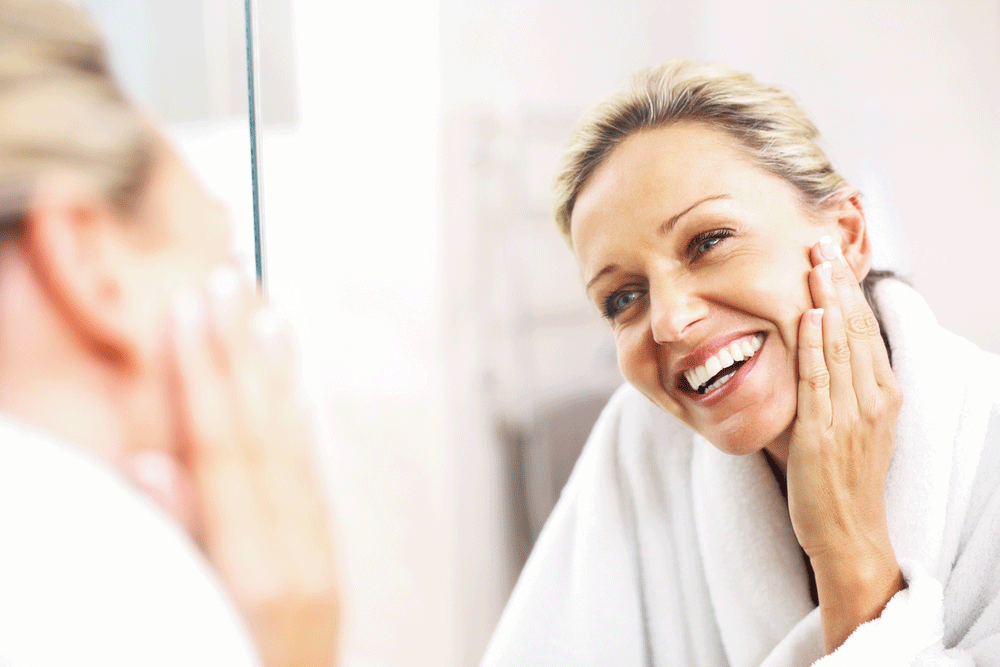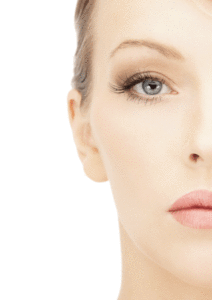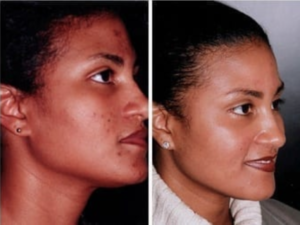MEDICAL GRADE CHEMICAL
PEELS FOR ACNE & MORE
A quick and easy treatment for fresher looking skin!
SUMMARY
Medical grade chemical peels use potent solutions to chemically exfoliate the skin to reveal a brighter, more even toned skin. Chemical peels can be used as treatment for acne, acne scarring, age spots, melasma, hyperpigmentation, skin texture issues, sun damage, and wrinkles. Peels in conjunction with microdermabrasion is a great starting point to achieving your desire for younger, healthier looking skin. Try chemical peels at our Montreal clinic.
WHERE
Physimed MediSpa, Montreal
ANESTHESIA
None
PAIN
None to low
LENGTH OF PROCEDURE
30 minutes
RECOVERY TIME
None to 48 hours
before & after gallery
Click here to view this before and after
INVASIVENESS
Low to mid

The human skin is the largest organ in the human body and is exposed to UV sun damage, neglect, and the natural aging process. As we grow older, prior neglect or damage to the skin begins to appear in a variety of ways; pigmented lesions, vascular lesions, wrinkles, uneven skin tone, etc. Many of these underlying conditions can either be corrected or deferred through the use of medical grade chemical peels.
Chemical peels in conjunction with microdermabrasion is a great starting point to achieving your desire for younger, healthier looking skin.
There is a large difference between salon facial peels and medical peels. Medical grade chemical peels allow for a higher percentage concentration of acid and at a PH level that can reach the deeper layers of your skin to be able to receive the benefits effectively. There are different types of solutions that are used for chemical peels, depending upon your skin conditions to be corrected, such as: Retinoid topical solutions, Alpha-Hydroxy-Acid (glycolic and lactic acids), Beta-hydroxy acids (salicylic acid), and TCA (Trichloroacetic acid). Some medical grade chemical peels are a combination of these different solutions, such as the Jessner Peel.
Depending on the type and concentration of the solution used, peels can affect different depths of the skin (superficial, mid level and deep). The results are more dramatic the deeper you go with a peel, but will require more downtime.

Results can be immediate, however, with time and more cell turnover, the results will become more evident. You’ll need more than one session for optimal results.
The treatment takes less than an hour, and downtime ranges from nonexistent to a couple of days depending on the potency of the chemical peel.
It’s normal for the skin to be mildly pink, tight, or dry following a chemical peel procedure. These side effects should subside over the next day with the use of a gentle moisturizer.
In the next few weeks, your skin may be more sensitive to the elements, so it’s important to use sunscreen with an SPF of 30 or higher.

Most people are good candidates for medical grade chemical peels, but they are not recommended for people with undiagnosed skin lesions, facial warts, autoimmune disorders, or uncontrolled diabetes.
Chemical peels are usually applied on the face, however, they can be used on the neck, décolleté as well as on other areas of the body, such as the back.
Side effects are rare, but depending on the depth of the chemical peel, you might experience some swelling, tenderness, or redness for a few hours to a few days after your treatment.
To maintain your results, it is usually recommended to do a series of milder chemical peels or bi-annual treatments of more potent peels.
Microdermabrasion and micro-laser peels can be very good alternatives to exfoliate the superficial skin and promote increased cell turnover.
For more information, ask for a free consultation with an aesthetics doctor.

